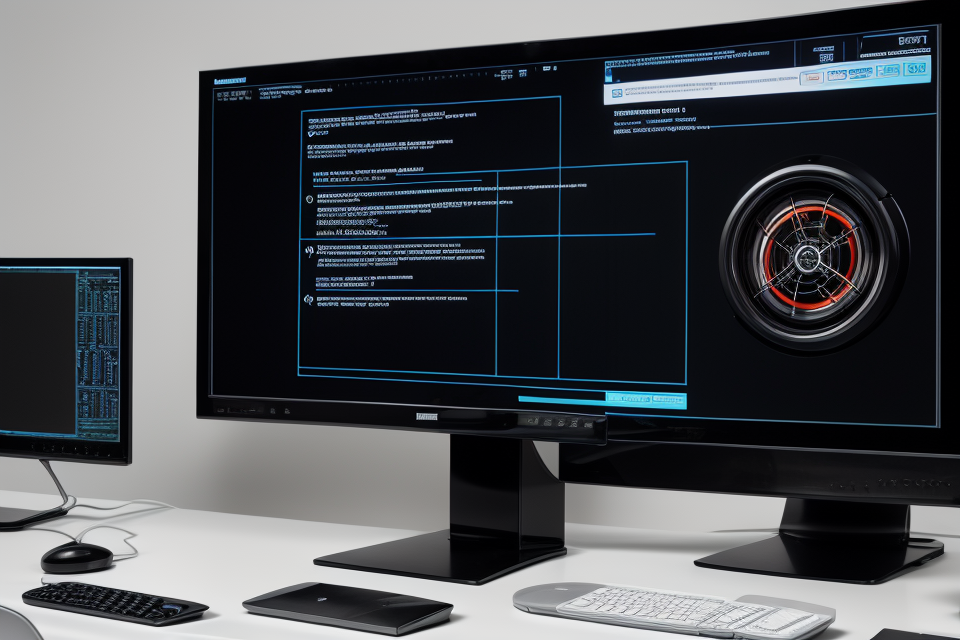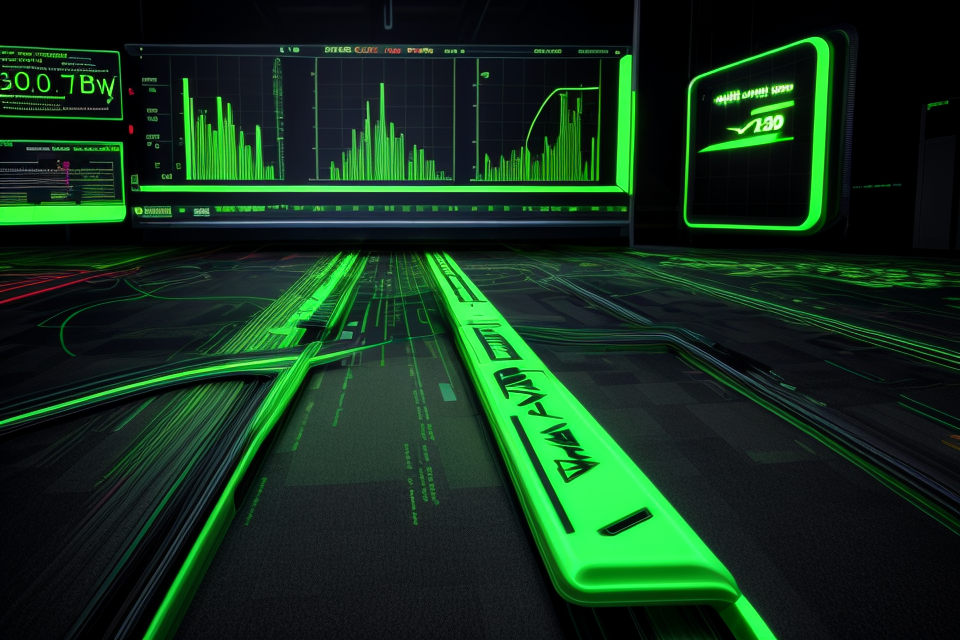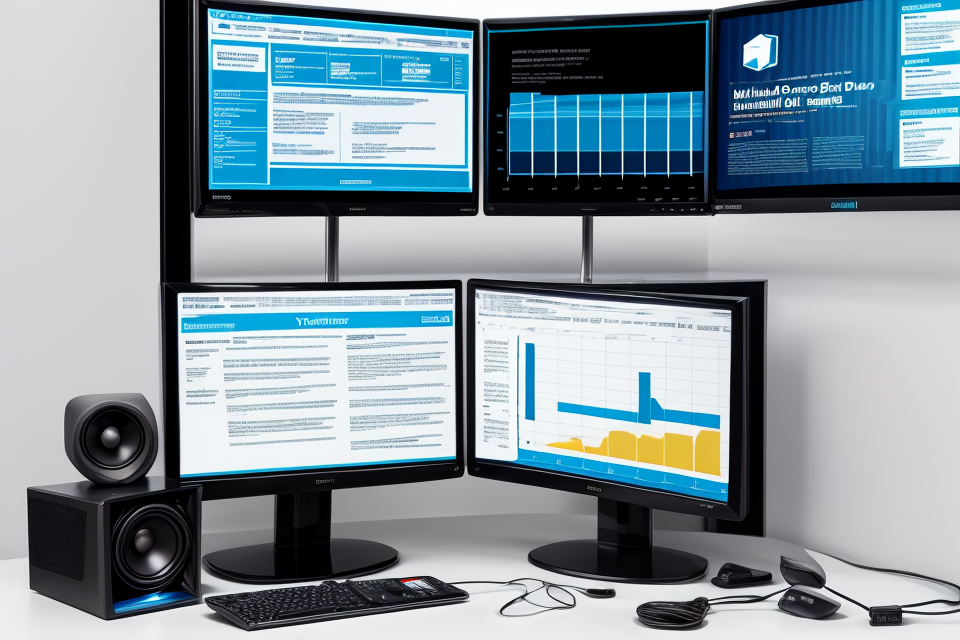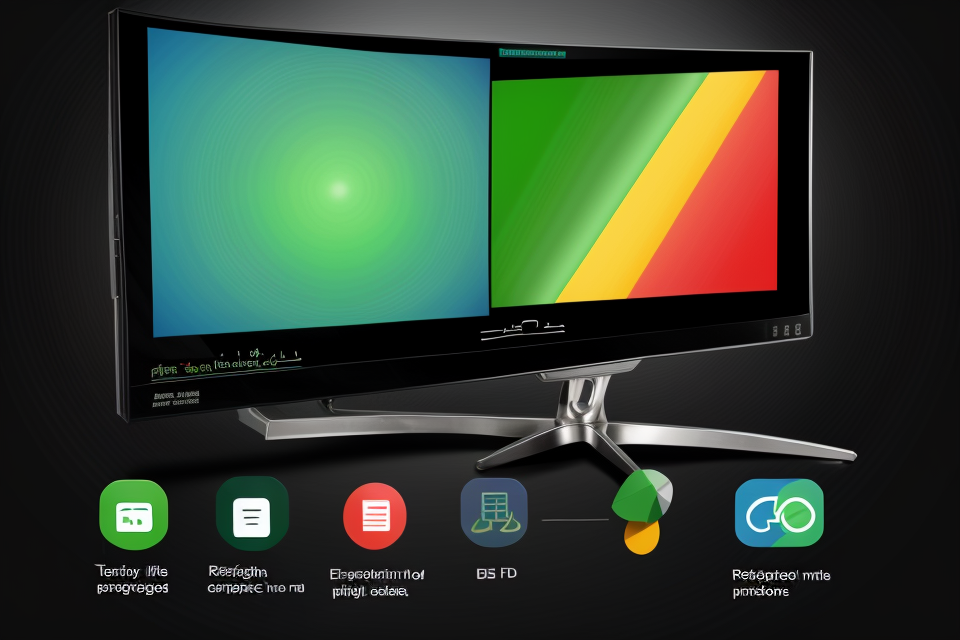
Gamers and tech enthusiasts often hear the terms “variable refresh rate” and “VSync” thrown around, but what do they really mean? While both terms are related to the smoothness of a video game’s visuals, they are not the same thing. In this article, we’ll explore the differences between variable refresh rate and VSync, and why they matter for your gaming experience. Get ready to geek out and level up your knowledge!
Understanding Variable Refresh Rate
What is Variable Refresh Rate?
Definition and Explanation
Variable refresh rate (VRR) is a technology that allows a display to dynamically adjust its refresh rate based on the output of the connected device. This means that the display can adjust its refresh rate to match the frame rate of the content being displayed, resulting in smoother and more stable visuals.
How it Works
VRR works by continuously monitoring the frame rate of the content being displayed on the screen. If the frame rate drops below a certain threshold, the display will adjust its refresh rate to match the frame rate of the content. This helps to prevent tearing and stuttering, which can occur when the frame rate of the content is not synchronized with the refresh rate of the display.
Benefits
The benefits of VRR include smoother and more stable visuals, as well as reduced input lag and lower power consumption. VRR can also improve the overall gaming experience by reducing tearing and stuttering, which can be particularly noticeable in fast-paced games. Additionally, VRR can help to reduce the strain on a device’s GPU, resulting in longer battery life and reduced heat output.
Types of Variable Refresh Rate
There are three main types of variable refresh rate technology available in the market: Adaptive-sync, FreeSync, and G-Sync. Each of these technologies aims to eliminate screen tearing and stuttering, while also providing a seamless gaming experience.
Adaptive-sync
Adaptive-sync is a technology developed by AMD that allows the refresh rate of the monitor to dynamically adjust based on the frame rate of the game. This technology uses a dynamic refresh rate range of 40Hz to 144Hz, which allows the monitor to adjust its refresh rate to match the frame rate of the game. This ensures that the game runs smoothly, without any screen tearing or stuttering.
FreeSync
FreeSync is another technology developed by AMD that works on a similar principle as Adaptive-sync. It allows the refresh rate of the monitor to dynamically adjust based on the frame rate of the game. However, unlike Adaptive-sync, FreeSync has a fixed refresh rate range of 40Hz to 60Hz. This means that the monitor can only adjust its refresh rate within this range, which may limit the performance of high-end gaming PCs.
G-Sync
G-Sync is a technology developed by NVIDIA that uses a different approach to eliminate screen tearing and stuttering. Unlike Adaptive-sync and FreeSync, which adjust the refresh rate of the monitor based on the frame rate of the game, G-Sync uses a dynamic refresh rate range of 60Hz to 240Hz. This allows the monitor to adjust its refresh rate based on the frame rate of the game, while also providing a more stable gaming experience.
In summary, each of these technologies aims to provide a seamless gaming experience by eliminating screen tearing and stuttering. While Adaptive-sync and FreeSync use a similar approach to adjust the refresh rate of the monitor based on the frame rate of the game, G-Sync uses a different approach by providing a dynamic refresh rate range of 60Hz to 240Hz.
Understanding VSync
What is VSync?
- Definition and Explanation
VSync, short for Vertical Sync, is a technology used in computer graphics to synchronize the display refresh rate with the frame rate of the graphics card. It ensures that the monitor displays the frames at a rate that matches the frame rate produced by the graphics card. This prevents visual artifacts such as tearing and juddering that can occur when the monitor refreshes at a different rate than the frame rate.
- How it works
VSync works by communicating the frame rate of the graphics card to the monitor. The monitor then adjusts its refresh rate to match the frame rate of the graphics card. This synchronization ensures that the monitor displays each frame produced by the graphics card at the correct time, preventing tearing and other visual artifacts.
- Purpose
The purpose of VSync is to provide a smoother and more stable visual experience for the user. It eliminates visual artifacts that can occur when the monitor refreshes at a different rate than the frame rate, resulting in a more seamless and immersive experience. Additionally, VSync can also help to prevent visual tearing, which can occur when the graphics card produces frames at a higher rate than the monitor can display.
Overall, VSync is an important technology in computer graphics that helps to ensure a smooth and stable visual experience for the user. By synchronizing the display refresh rate with the frame rate of the graphics card, it eliminates visual artifacts and provides a more seamless and immersive experience.
The Problem with VSync
VSync, short for Vertical Sync, is a technology used in computer monitors and TVs to synchronize the display’s refresh rate with the frame rate of the content being displayed. The main purpose of VSync is to prevent visual artifacts such as ghosting and tearing that can occur when the frame rate of the content is not in sync with the refresh rate of the display.
However, VSync has some limitations and drawbacks that can affect gaming performance. One of the main limitations of VSync is that it can introduce input lag, which is the delay between a user’s input and the corresponding action on the screen. This input lag can be especially noticeable in fast-paced games where timing is crucial.
Another drawback of VSync is that it can cause stuttering, which is a repeated, brief interruption of the fluid motion of a video or game. This can be caused by the monitor’s refresh rate not being in sync with the frame rate of the content being displayed, resulting in a choppy, uneven motion.
Overall, VSync can have a negative impact on gaming performance, particularly in fast-paced games where timing and smooth motion are important. As a result, many gamers and enthusiasts look for alternatives to VSync, such as variable refresh rate technology, which offers a more seamless and responsive gaming experience.
Comparing Variable Refresh Rate and VSync
Similarities
- Both aim to eliminate tearing and stuttering
- Tearing and stuttering are common issues in gaming that can affect the overall performance and user experience. Tearing occurs when the game’s frame rate is not synchronized with the monitor’s refresh rate, resulting in a visible tear in the image. Stuttering, on the other hand, is a sudden hesitation or delay in the game’s frame rate, causing a choppy and unresponsive experience.
- Both improve gaming performance
- Variable refresh rate and VSync work together to improve gaming performance by ensuring that the game’s frame rate is synchronized with the monitor’s refresh rate. This reduces tearing and stuttering, resulting in a smoother and more responsive gaming experience. By optimizing the frame rate, these technologies also help reduce input lag, which is the delay between a user’s input and the corresponding action in the game. This results in a more responsive and immersive gaming experience.
Differences
Implementation
- Variable refresh rate (VRR) is a technology that allows a display to dynamically adjust its refresh rate based on the content being displayed. This is in contrast to fixed refresh rate displays, which have a fixed refresh rate regardless of the content.
- VSync, on the other hand, is a technology that synchronizes the refresh rate of a display with the frame rate of the content being displayed. This ensures that the display refreshes at the same rate as the content, reducing tearing and stuttering.
Compatibility
- VRR is compatible with a wide range of displays and content, including gaming, video, and image content. It is particularly useful for displays that are used for gaming or other high-performance applications.
- VSync is typically only compatible with gaming content, as it requires a display and a graphics card that support the technology.
Cost
- VRR is generally more expensive to implement than VSync, as it requires more advanced technology and more sophisticated software.
- VSync is typically less expensive to implement, as it requires less advanced technology and software. However, it may not be as effective at reducing tearing and stuttering as VRR in some cases.
Which is Better?
When it comes to choosing between variable refresh rate (VRR) and VSync, it’s essential to understand the pros and cons of each to make an informed decision. Factors such as your preferred gaming experience, display, and hardware compatibility should be considered when choosing between these two technologies.
Pros and Cons of Variable Refresh Rate (VRR):
Pros:
- Offers smoother and more stable frame rates.
- Reduces screen tearing and stuttering.
- Provides better responsiveness and input lag reduction.
- Supports a wider range of refresh rates.
Cons:
- May require a compatible display and graphics card.
- Some games may not support VRR.
Pros and Cons of VSync:
- Simple to enable and use.
- Compatible with most displays and graphics cards.
-
Reduces screen tearing.
-
May introduce input lag and stuttering.
- Limited refresh rate range.
Factors to Consider When Choosing:
- Compatibility: Ensure that your display and graphics card support the chosen technology.
- Gaming Experience: Consider how VRR or VSync will impact your gaming experience, such as reducing input lag or screen tearing.
- Budget: Determine if the required hardware upgrades are within your budget.
Recommendations:
- For competitive gaming or fast-paced games, VRR is recommended for its smoother frame rates and reduced input lag.
- For casual gaming or games that do not support VRR, VSync may be a suitable option.
- If you have a high-end graphics card and display, VRR may offer a better gaming experience.
Ultimately, the choice between VRR and VSync depends on your individual gaming needs and preferences. Experiment with both options to determine which technology best suits your gaming setup and enhances your overall experience.
Choosing the Right Solution for Your Needs
Factors to Consider
When choosing between a variable refresh rate and VSync, there are several factors to consider to ensure that you get the best possible gaming experience. Here are some of the most important factors to keep in mind:
Monitor Type
The first factor to consider is the type of monitor you have. If you have a high-refresh-rate monitor, you may want to choose a variable refresh rate to take full advantage of its capabilities. On the other hand, if you have a lower-refresh-rate monitor, VSync may be a better choice to prevent tearing and ensure smooth gameplay.
Budget
Another important factor to consider is your budget. While some monitors may support both variable refresh rate and VSync, they can come at a premium price. It’s important to weigh the benefits of each option against your budget to ensure that you get the best possible value for your money.
Compatibility with Other Components
Finally, it’s important to consider the compatibility of your other gaming components with the chosen solution. For example, if you have a high-end graphics card that supports FreeSync, you may want to choose a monitor that also supports FreeSync to ensure maximum compatibility and performance.
Overall, by considering these factors, you can make an informed decision on which solution is best for your gaming needs and ensure that you get the best possible gaming experience.
Step-by-Step Guide
Assessing your needs
When it comes to choosing between a variable refresh rate and VSync, it’s important to assess your specific needs and requirements. Here are some key factors to consider:
- Type of content: If you’re a gamer, you may prioritize a smooth and seamless gaming experience. On the other hand, if you’re a graphic designer or video editor, you may need a more precise control over frame rates.
- Hardware capabilities: It’s important to consider the capabilities of your hardware when choosing between a variable refresh rate and VSync. Some monitors may not support certain refresh rate technologies, so it’s important to do your research before making a decision.
- Budget: Variable refresh rate technology can be more expensive than traditional VSync, so it’s important to consider your budget when making a decision.
Researching options
Once you’ve assessed your needs, it’s time to research your options. Here are some key factors to consider when researching:
- Technology: Look for monitors that support the technology you’re interested in. For example, if you’re interested in a variable refresh rate, look for monitors that support AMD FreeSync or NVIDIA G-Sync.
- Refresh rate: Consider the refresh rate of the monitor. A higher refresh rate can provide a smoother and more seamless experience, but it may also come with a higher price tag.
- Response time: Look for a monitor with a fast response time, as this can help reduce motion blur and provide a more seamless experience.
Making a decision
Once you’ve researched your options, it’s time to make a decision. Here are some key factors to consider when making a decision:
- Your needs: Consider your specific needs and requirements, such as the type of content you’ll be viewing, your hardware capabilities, and your budget.
- Features: Consider the features of the monitor, such as the refresh rate, response time, and technology supported.
- Price: Consider the price of the monitor and how it fits into your budget.
Overall, choosing between a variable refresh rate and VSync requires careful consideration of your specific needs and requirements. By following this step-by-step guide, you can make an informed decision that meets your needs and provides a seamless and smooth experience.
FAQs
1. What is a variable refresh rate?
Variable refresh rate is a technology that allows a display to dynamically adjust its refresh rate based on the content being displayed. This means that the refresh rate can be increased or decreased depending on the amount of motion in the scene, resulting in smoother motion and less stuttering.
2. What is VSync?
VSync, short for Vertical Sync, is a technology that synchronizes the display’s refresh rate with the graphics card’s frame rate. This ensures that the display only displays frames at the exact moment they are rendered, preventing screen tearing and other artifacts.
3. Are variable refresh rate and VSync the same thing?
No, variable refresh rate and VSync are not the same thing. Variable refresh rate is a technology that allows a display to dynamically adjust its refresh rate based on the content being displayed, while VSync is a technology that synchronizes the display’s refresh rate with the graphics card’s frame rate. While both technologies can be used to improve the smoothness of motion on a display, they work in different ways and serve different purposes.
4. How do variable refresh rate and VSync work together?
Variable refresh rate and VSync can work together to provide a smoother and more stable visual experience. When using a display with variable refresh rate, the graphics card will send frames to the display at its maximum frame rate. The display will then use its variable refresh rate technology to dynamically adjust its refresh rate based on the amount of motion in the scene, ensuring that the frames are displayed at the optimal refresh rate for maximum smoothness. Meanwhile, VSync will ensure that the frames are displayed at the exact moment they are rendered, preventing screen tearing and other artifacts.
5. Do I need both variable refresh rate and VSync for smooth motion?
While both variable refresh rate and VSync can improve the smoothness of motion on a display, they are not necessary for a smooth visual experience. If you have a display with a high refresh rate and a graphics card that can render frames at a high frame rate, you may not need to use variable refresh rate or VSync to achieve smooth motion. However, using both technologies together can provide even smoother motion and reduce the likelihood of artifacts such as screen tearing.


